- Functions and Closures in Swift | A Basic Tutorial
- Swift Tutorial – Enumerations & Structures | Everything You Need to Know
- Ionic Native Components | The Ultimate Guide
- Ionic Tutorial – Build Cross Platform Apps | A Complete Guide
- Introduction to Swift Control Flow | Learn in 1 Day FREE Tutorial
- Introduction to Swift | The Definitive Tutorial for Beginners
- Kotlin Tutorial for Beginners | Learn Kotlin at Ease
- Android Studio Tutorial
- React Native Tutorial
- iOS Architecture
- 5G Tutorial
- Functions and Closures in Swift | A Basic Tutorial
- Swift Tutorial – Enumerations & Structures | Everything You Need to Know
- Ionic Native Components | The Ultimate Guide
- Ionic Tutorial – Build Cross Platform Apps | A Complete Guide
- Introduction to Swift Control Flow | Learn in 1 Day FREE Tutorial
- Introduction to Swift | The Definitive Tutorial for Beginners
- Kotlin Tutorial for Beginners | Learn Kotlin at Ease
- Android Studio Tutorial
- React Native Tutorial
- iOS Architecture
- 5G Tutorial
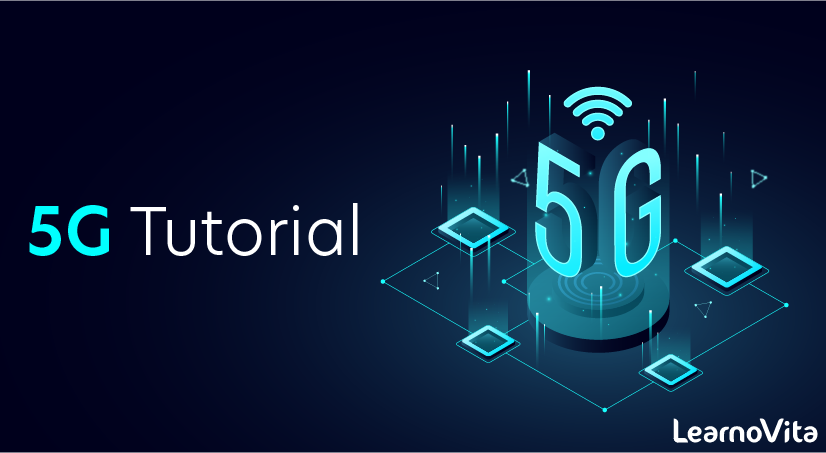
5G Tutorial
Last updated on 19th Sep 2020, Blog, Mobile app development, Tutorials
5G is the 5th generation of mobile networks, a significant evolution of today’s 4G LTE networks. 5G has been designed to meet the very large growth in data and connectivity of today’s modern society, the internet of things with billions of connected devices, and tomorrow’s innovations. 5G will initially operate in conjunction with existing 4G networks before evolving to fully standalone networks in subsequent releases and coverage expansions
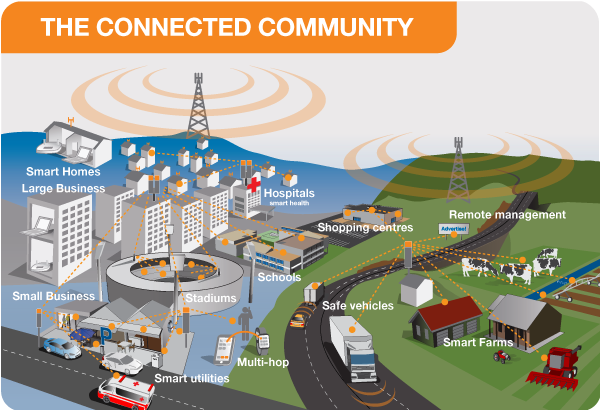
In addition to delivering faster connections and greater capacity, a very important advantage of 5G is the fast response time referred to as latency.
Latency is the time taken for devices to respond to each other over the wireless network. 3G networks had a typical response time of 100 milliseconds, 4G is around 30 milliseconds and 5G will be as low as
1 millisecond. This is virtually instantaneous opening up a new world of connected applications.
WHAT WILL 5G ENABLE?
5G will enable instantaneous connectivity to billions of devices, the Internet of Things (IoT) and a truly connected world.
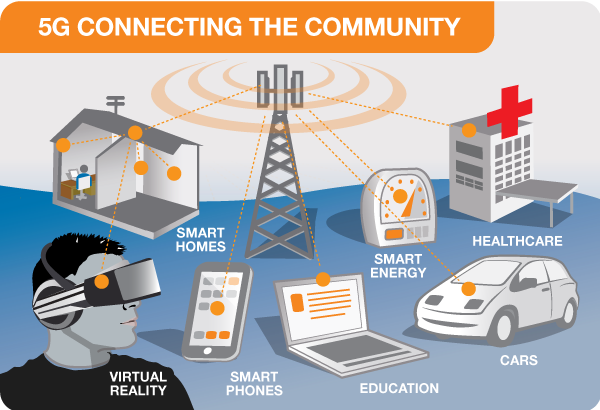
5G will provide the speed, low latency and connectivity to enable a new generation of applications, services and business opportunities that have not been seen before.
Subscribe For Free Demo
Error: Contact form not found.
There are three major categories of use case for 5G:
- 1.Massive machine to machine communications – also called the Internet of Things (IoT) that involves connecting billions of devices without human intervention at a scale not seen before. This has the potential to revolutionise modern industrial processes and applications including agriculture, manufacturing and business communications.
- 2.Ultra-reliable low latency communications – mission critical including real-time control of devices, industrial robotics, vehicle to vehicle communications and safety systems, autonomous driving and safer transport networks. Low latency communications also opens up a new world where remote medical care, procedures, and treatment are all possible
- 3.Enhanced mobile broadband – providing significantly faster data speeds and greater capacity keeping the world connected. New applications will include fixed wireless internet access for homes, outdoor broadcast applications without the need for broadcast vans, and greater connectivity for people on the move.
- It will make a unified global standard for all.
- Network availability will be everywhere and will facilitate people to use their computer and such kind of mobile devices anywhere anytime.
- Because of the IPv6 technology, visiting care of mobile IP addresses will be assigned as per the connected network and geographical position.
- Its application will make the world a real WiFi zone.
- Its cognitive radio technology will facilitate different versions of radio technologies to share the same spectrum efficiently.
- Its application will facilitate people to avail radio signal at higher altitude as well.
- Practically possible to avail the super speed i.e. 1 to 10 Gbps.
- Latency will be 1 millisecond (end-to-end round trip).
- 1,000x bandwidth per unit area.
- Feasibility to connect 10 to 100 number of devices.
- Worldwide coverage.
- About 90% reduction in network energy usage.
- Battery life will be much longer.
- Whole world will be in a wi-fi zone.
- High resolution and bi-directional large bandwidth shaping.
- Technology to gather all networks on one platform.
- More effective and efficient.
- Technology to facilitate subscriber supervision tools for the quick action.
- Most likely, will provide a huge broadcasting data (in Gigabit), which will support more than 60,000 connections.
- Easily manageable with the previous generations.
- Technological sound to support heterogeneous services (including private network).
- Possible to provide uniform, uninterrupted, and consistent connectivity across the world.
- Parallel multiple services, such as you can know weather and location while talking with another person.
- You can control your PCs by handsets.
- Education will become easier − A student sitting in any part of the world can attend the class.
- Medical Treatment will become easier & frugal − A doctor can treat the patient located in a remote part of the world.
- Monitoring will be easier − A governmental organization and investigating offers can monitor any part of the world. Possible to reduce the crime rate.
- Visualizing the universe, galaxies, and planets will be possible.
- Possible to locate and search the missing person.
- Possible natural disaster including tsunami, earthquake etc. can be detected faster.
- Technology is still under process and research on its viability is going on.
- The speed, this technology is claiming seems difficult to achieve (in future, it might be) because of the incompetent technological support in most parts of the world.
- Many of the old devices would not be competent to 5G, hence, all of them need to be replaced with new one — expensive deals.
- Developing infrastructure needs high cost.
- Security and privacy issues yet to be solved.
- How far will 5G be viable?
- Will it be the technology of some of the developed countries or developing countries will also get the benefit of this?
- Technological Challenges
- Common Challenges
- Inter-cell Interference − This is one of the major technological issues that need to be solved. There is variations in size of traditional macro cells and concurrent small cells that will lead to interference.
- Efficient Medium Access Control − In a situation, where dense deployment of access points and user terminals are required, the user throughput will be low, latency will be high, and hotspots will not be competent to cellular technology to provide high throughput. It needs to be researched properly to optimize the technology.
- Traffic Management − In comparison to the traditional human to human traffic in cellular networks, a great number of Machine to Machine (M2M) devices in a cell may cause serious system challenges i.e. radio access network (RAN) challenges, which will cause overload and congestion.
- Multiple Services − Unlike other radio signal services, 5G would have a huge task to offer services to heterogeneous networks, technologies, and devices operating in different geographic regions. So, the challenge is standardization to provide dynamic, universal, user-centric, and data-rich wireless services to fulfil the high expectation of people.
- Infrastructure − Researchers are facing technological challenges of standardization and application of 5G services.
- Communication, Navigation, & Sensing − These services largely depend upon the availability of radio spectrum, through which signals are transmitted. Though 5G technology has strong computational power to process the huge volume of data coming from different and distinct sources, but it needs larger infrastructure support.
- Security and Privacy − This is one of the most important challenges that 5G needs to ensure the protection of personal data. 5G will have to define the uncertainties related to security threats including trust, privacy, cybersecurity, which are growing across the globe.
- Legislation of Cyberlaw − Cybercrime and other fraud may also increase with the high speed and ubiquitous 5G technology. Therefore, legislation of the Cyberlaw is also an imperative issue, which largely is governmental and political (national as well as international issue) in nature.
For communities, 5G will enable the connection of billions of devices for our smart cities, smart schools and smart homes, smart and safer vehicles, enhance health care and education, and provide a safer and more efficient place to live.
For businesses and industry, 5G and IoT will provide a wealth of data allowing them to gain insights into their operations like never before. Businesses will operate and make key decisions driven by data, innovate in agriculture, smart farms and manufacturing, paving the way for cost savings, better customer experience and long term growth.
New and Emerging technologies such as virtual and augmented reality will be accessible by everyone. Virtual reality provides connected experiences that were not possible before. With 5G and VR you will be able to travel to your favourite city, watch a live football match with the feeling of being at the ground, or even be able to inspect real estate and walk through a new home all from the comfort of your couch.
5G will keep us connected in tomorrow’s smart cities, smart homes and smart schools, and enable opportunities that we haven’t even thought of yet.
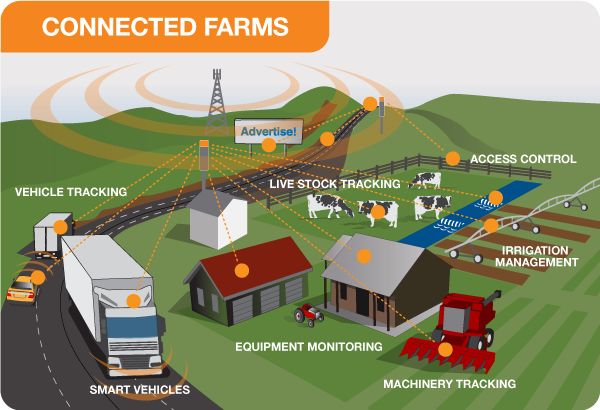
5G Enhanced Mobile Broadband and IoT will revolutionise agriculture and farming.
WHEN DID 5G LAUNCH?
Initial 5G services commenced in many countries in 2019 and widespread availability of 5G is expected by 2025.
WHAT ARE THE FIRST APPLICATIONS FOR 5G?
Fixed wireless access for homes and enhanced mobile broadband services are the first applications using new 5G phones, tablets, wireless access modems and hot spots.
WHAT DO 5G DEVICES OFFER?
The prime benefits of 5G devices will be significantly faster speeds in data access, downloading and streaming content. In addition, 5G devices will have increased computing power and make use of the lower latency, meaning that the devices will enjoy virtually instantaneous connections to the network, as well as greater connectivity when on the move due to the use of advanced antenna beam steering.
WHAT DEVICES ARE AVAILABLE FOR 5G?
Mobile handsets, tablets and hot spots equipped with 3G, 4G and 5G connectivity were launched in 2019 and low latency and widespread machine to machine applications using 5G will be developed in the coming years.
Salient Features of 5G
5th Generation Mobile Network or simply 5G is the forthcoming revolution of mobile technology. The features and its usability are much beyond the expectation of a normal human being. With its ultra-high speed, it is potential enough to change the meaning of a cell phone usability.
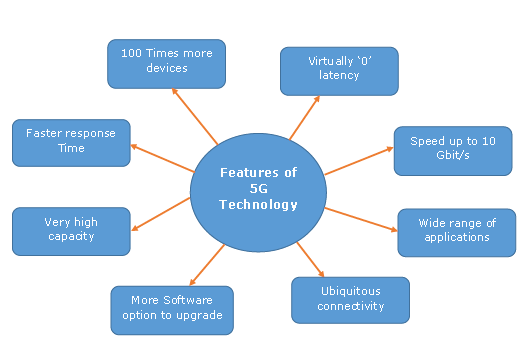
With a huge array of innovative features, now your smartphone would be more parallel to the laptop. You can use broadband internet connection; other significant features that fascinate people are more gaming options, wider multimedia options, connectivity everywhere, zero latency, faster response time, and high quality sound and HD video can be transferred on other cell phones without compromising with the quality of audio and video.
Architecture of 5G
As shown in the following image, the system model of 5G is entirely IP based model designed for the wireless and mobile networks.
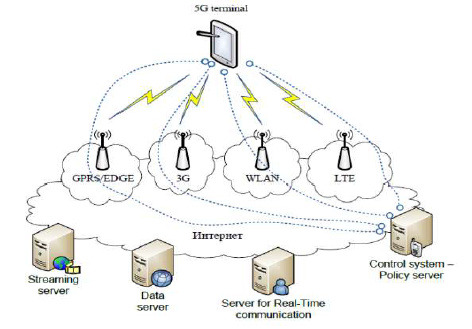
The system comprises a main user terminal and then a number of independent and autonomous radio access technologies. Each of the radio technologies is considered as the IP link for the outside internet world. The IP technology is designed exclusively to ensure sufficient control data for appropriate routing of IP packets related to a certain application connections i.e. sessions between client applications and servers somewhere on the Internet. Moreover, to make accessible routing of packets should be fixed in accordance with the given policies of the user (as shown in the image given below).
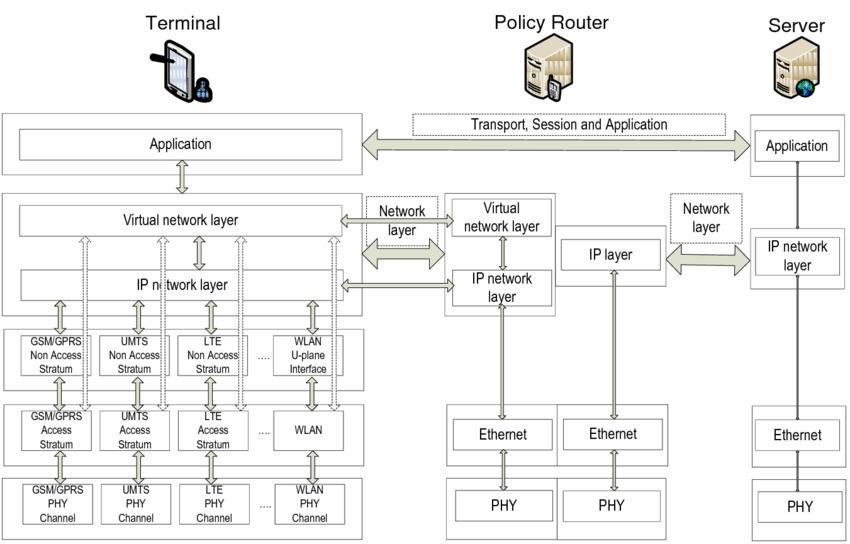
The Master Core Technology
As shown in Figure 5, the 5G MasterCore is a convergence point for the other technologies, which have their own impact on existing wireless networks. Interestingly, its design facilitates MasterCore to get operated into parallel multimode including all IP network mode and 5G network mode. In this mode (as shown in the image given below), it controls all network technologies of RAN and Different Access Networks (DAT). Since the technology is compatible and manages all the new deployments (based on 5G), it is more efficient, less complicated, and more powerful.
Surprisingly, any service mode can be opened under 5G New Deployment Mode as World Combination Service Mode (WCSM). WCSM is a wonderful feature of this technology; for example, if a professor writes on the white board in a country – it can be displayed on another white board in any other part of the world besides conversation and video. Further, new services can be easily added through parallel multimode service.
5G – Time Period Required
Normally, it is expected that the time period required for the 5G technology development and its implementation is about five years more from now (by 2020). But to become usable for the common people in developing countries, it could be even more.
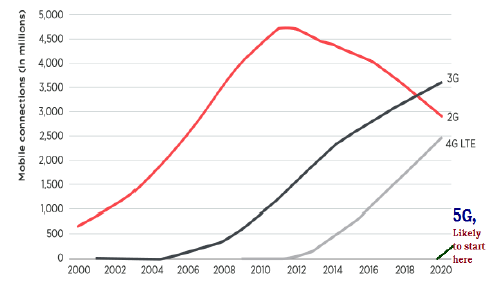
Graph 1 − Showing the Timeline of all previous generation technologies.
Expected Time Length
By considering the multiple utility and various fashionable salient features, researchers are anticipating that this technology will be in use until the 2040s.
5G – Applications
5G technology is adorned with many as well as distinct features, which applicability is useful for a wide range of people irrespective of their purposes (as shown in the web image).
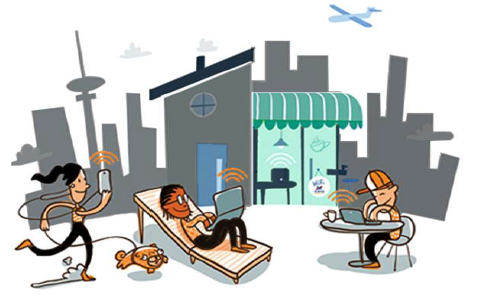
Applications of 5
Some of the significant applications are −
5G – Advancement
Application of 5G is very much equivalent to accomplishment of a dream. It is integrated with beyond the limit advanced features in comparison to the previous technologies.
Advanced Features
In comparison to previous radio technologies, 5G has following advancement −
5G – Advantages & Disadvantages
5th generation technology offers a wide range of features, which are beneficial for all groups of people including, students, professionals (doctors, engineers, teachers, governing bodies, administrative bodies, etc.) and even for a common man.
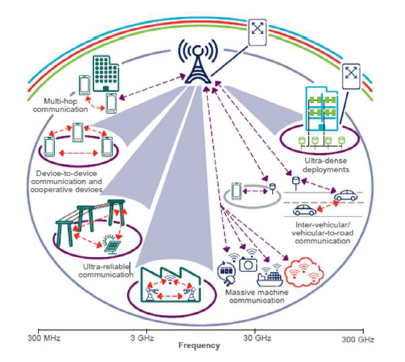
Important Advantages
There are several advantages of 5G technology, some of the advantages have been shown in the above Ericsson image, and many others are described below −
Some Other Advantages for the Common People
Disadvantages of 5G Technology
Though, 5G technology is researched and conceptualized to solve all radio signal problems and hardship of mobile world, but because of some security reason and lack of technological advancement in most of the geographic regions, it has following shortcomings −
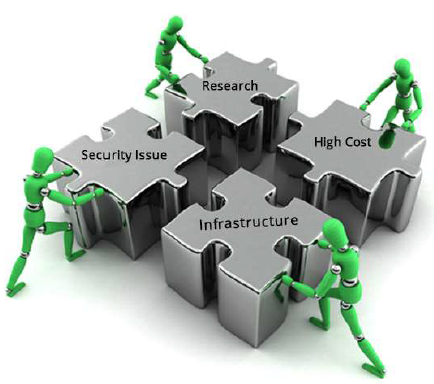
5G – Challenges
Challenges are the inherent part of the new development; so, like all technologies, 5G has also big challenges to deal with. As we see past i.e. development of radio technology, we find very fast growth. Starting from 1G to 5G, the journey is merely about 40 years old (Considering 1G in 1980s and 5G in 2020s). However, in this journey, the common challenges that we observed are lack of infrastructure, research methodology, and cost.

Still, there are dozens of countries using 2G and 3G technologies and don’t know even about 4G, in such a condition, the most significant questions in everyone’s mind are −
To understand these questions, the challenges of 5G are categorized into the following two headings −
Technological Challenges
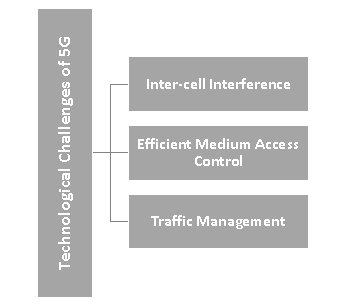
Common Challenges
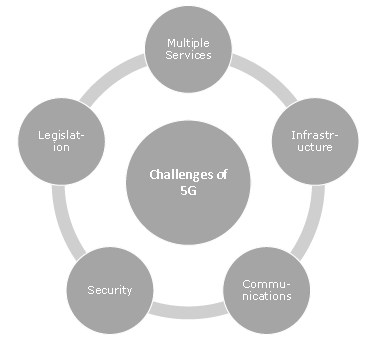
5G – Future Scope
Several researches and discussions are going on across the world among technologists, researchers, academicians, vendors, operators, and governments about the innovations, implementation, viability, and security concerns of 5G.
As proposed, loaded with multiple advanced features starting from the super high speed internet service to smooth ubiquitous service, 5G will unlock many of the problems. However, the question is — in a situation, where the previous technologies (4G and 3G) are still under process and in many parts yet to be started; what will be the future of 5G?
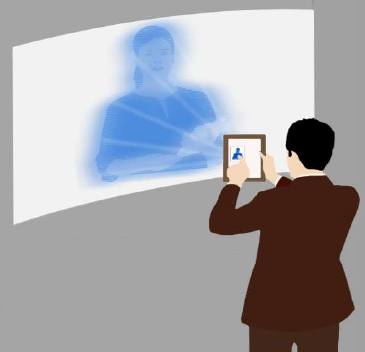
Conclusion
5th generation technology is designed to provide incredible and remarkable data capabilities, unhindered call volumes, and immeasurable data broadcast within the latest mobile operating system. Hence, it is more intelligent technology, which will interconnect the entire world without limits. Likewise, our world would have universal and uninterrupted access to information, communication, and entertainment that will open a new dimension to our lives and will change our lifestyle meaningfully.
Moreover, governments and regulators can use this technology as an opportunity for good governance and can create healthier environments, which will definitely encourage continuing investment in 5G, the next generation technology.

